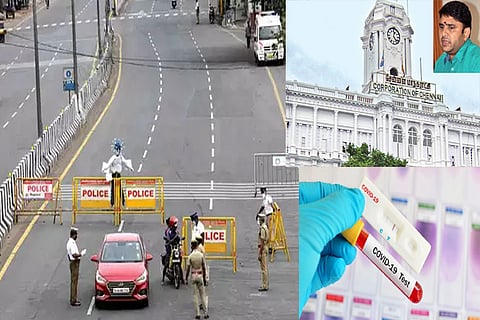

Chennai
As per the 7-day CAGR (Compound Annual Growth Rate), doubling time in the city started to improve immediately after the government imposed complete lockdown 2.1 for four days from April 26 to April 29.
The data shows that the doubling time witnessed a steep fall from around 21 days on April 16 to 7 to 8 days on April 19, forcing the State to impose a complete lockdown. The data also suggest that the complete lockdown helped the civic body to maintain the doubling time curve stable for the next one week, after which the doubling time started to improve again to reach 15 days on May 30.
However, data shows the civic body could not further improve the doubling time beyond 20 days for several days, whereas the city reported more than 1,000 new cases each day.
At this juncture, the State government announced another complete lockdown 5.1 from June 19 to June 30. It was further extended to July 5. Despite the daily number of new cases crossing 2,000 during the period, the civic body could manage to keep the doubling time curve stable until June 30. On July 1, the curve started to move upwards and reached a doubling time of around 49 as on July 24.
It may be noted that the city had reported 2,392 new cases on June 30, which is the worst single-day spike since the outbreak of the pandemic, and average daily new cases are now around 1,200.
Chennai Corporation Commissioner G Prakash, during one of his press conferences, had said that the situation in the city is improving due to the imposition of complete lockdown and intensified tests during and after the lockdown.
71 per cent of deceased between 50 to 79 years of age
The data also suggest that of the 1,969 COVID-19 deaths reported in the city up to July 24, 1,410 persons were between 50 to 79 years of age, which is 71.60 per cent.
As many as 401 persons were between 50 to 59 years of age and 542 persons were between 60 to 69 years of age. As many as 467 persons were between 70 to 79 years of age. Also, 68.96 per cent of victims were male and 31.04 per cent were female.
Visit news.dtnext.in to explore our interactive epaper!
Download the DT Next app for more exciting features!
Click here for iOS
Click here for Android